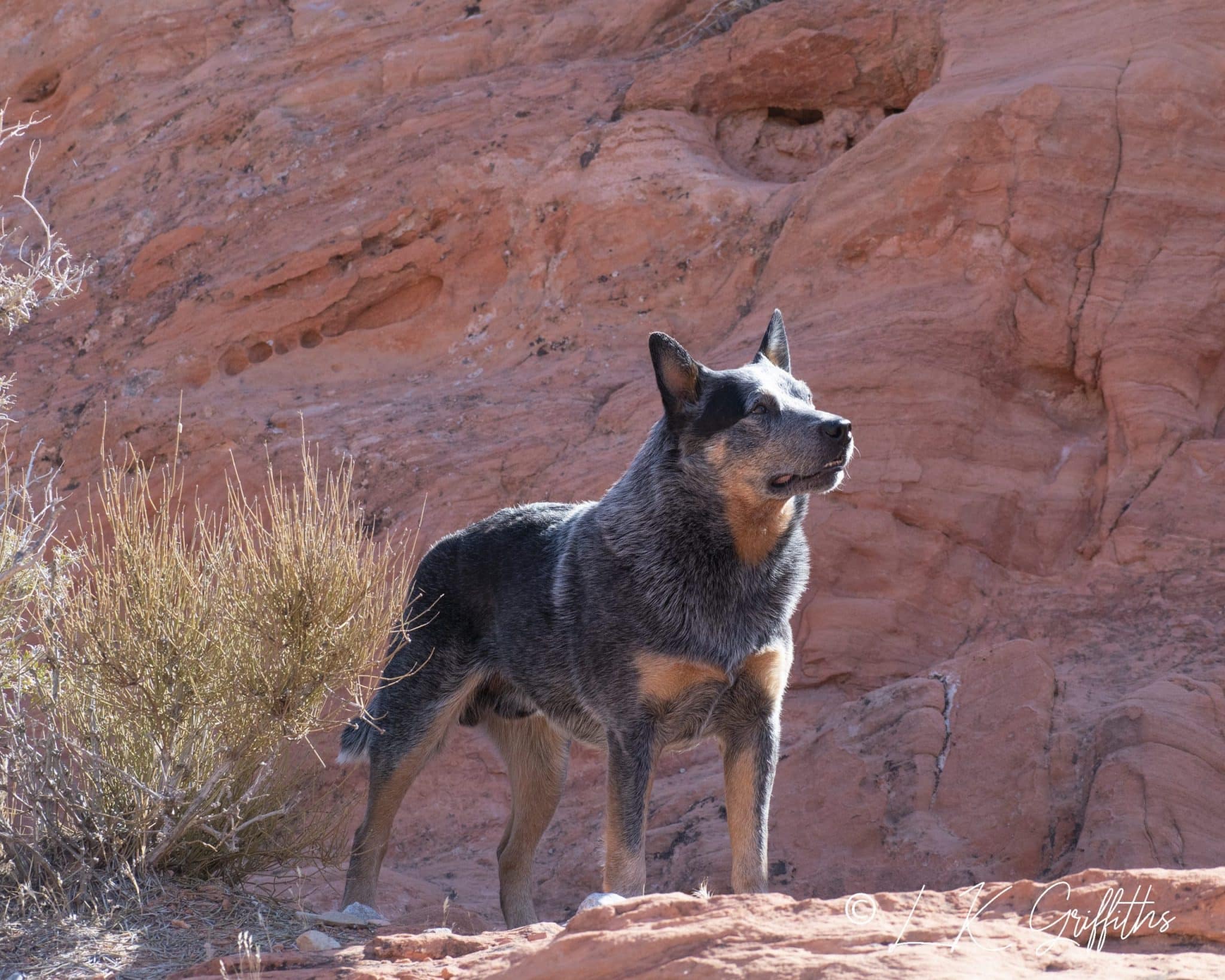Are Australian Cattle Dogs Right for You? When the great grazing lands of Australia opened to settlers during the 1800s, necessity compelled ranchers to create a dog that could withstand the harsh conditions, work quietly, and have the ability to face free-roaming, stubborn cattle.
Highland Collies were crossed to native Dingos, with a dash of Dalmatian and Kelpie, to aid in the development of the highly intelligent and biddable working dog that we so treasure today.
The work of Robert Kaleski in formulating the first breed standard in 1902 is of enormous importance.
Early accounts credit American servicemen stationed in Australia for bringing the Australian Cattle Dog (ACD) home with them after World War II. The genesis breeders in America acquired their stock from top Australian kennels and, thankfully, preserved the breed’s uniformity, intelligence, and trainability. In September 1980, the ACD joined the Working Group to become the 126th AKC recognized breed. In January 1983, they became part of the newly formed Herding Group.
The early development of the ACD prioritized its successful function as a working partner. Never assume that today’s ACDs are less capable than their brave ancestors. Every part of an ACD represents strength, resistance to injury, and common sense construction. Capable of independent thinking, the ACD prefers an owner who appreciates its devotion to family and property. They require a gentle and fair leader who has the time to form and maintain a strong relationship.
If you are thinking about living with a Cattle Dog, you must first consider what you will be doing with your Cattle Dog. The people [who are] happiest living with ACDs are active in mind and body. Whether it’s being a co-conspirator on a trail ride, moving sheep, rounding up those bovine bunch quitters, training for a fun run, flyball, obedience or herding trials, SAR or tracking, the answer is always, “YES, please. We will do our best!” This highly inquisitive and resourceful dog needs physical and mental stimulation to be healthy and to avoid demanding behaviors. Owners should be ready to spend significant time with their dog whether in direct activity or as a trusted companion. You are or will become “dog people.”
When selecting a puppy, a wise owner should rely on competent breeders for help in matching temperaments and abilities. The forward-thinking breeders of today will present puppies from thoroughly health-tested parents with a lifetime commitment to the new owners and the puppy. Health testing of breeding stock should include OFA or Penn Hip x-rays (hip dysplasia), elbow x-rays (elbow dysplasia), BAER (hearing), and PRAd markers (blindness). Familiarize yourself with the breed standard and spend the time to meet the parents from which your puppy arises. Early socialization is a must and obedience training makes communication easier. A quick and willing mind makes training an ACD a pleasure. Do not take a puppy that you are too busy to enjoy.
Basic care is a delight. The all-weather coat has no odor or oily residue. It is smooth, consisting of a double coat with a short, dense undercoat. The undercoat is shed biannually, and weekly brushing is required. Bathing and toenail care are influenced by activity. The breed standard allows for two colors; red or blue. The markings on a blue coat are black, blue or tan. The red coat should be evenly colored and can have red head markings. Any dilute colors such as chocolate or slate are not purebred stock.
ACDs participate, successfully, in all canine events offered through the AKC. The Australian Cattle Dog Club of America is an active group of enthusiasts who show and compete in Agility, Conformation, Obedience, Rally Obedience, Scent Work, Fast Cat, Dock Diving, and Herding, with a National Specialty held every Fall.
The Australian Cattle Dog is a dog built for maximum exercise tolerance. They have great integrity and an unshakable devotion to their people. These two factors, paired with a highly developed intelligence, makes them a poor choice for owners with little time or low expectations. But if you wish for a best friend, a wise guardian, and a winning performance partner, this may be your dog.









